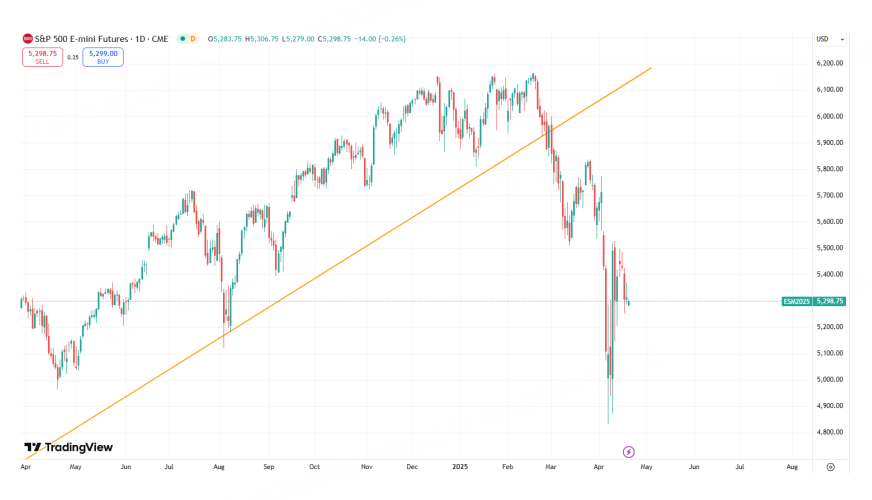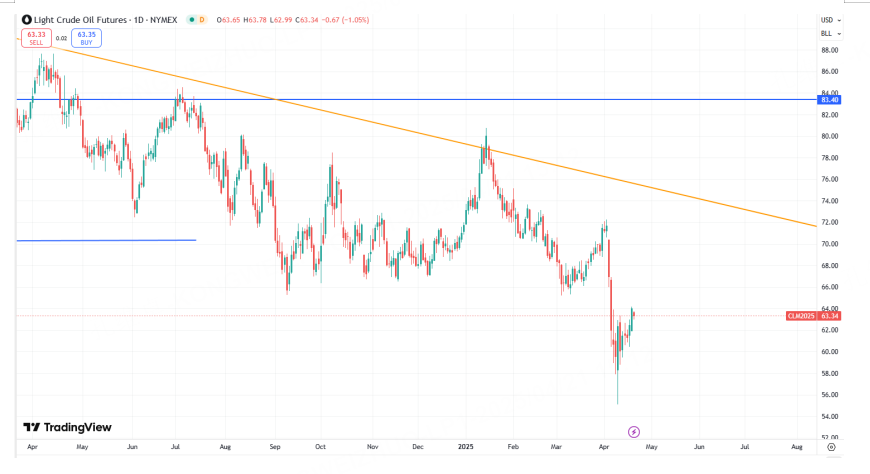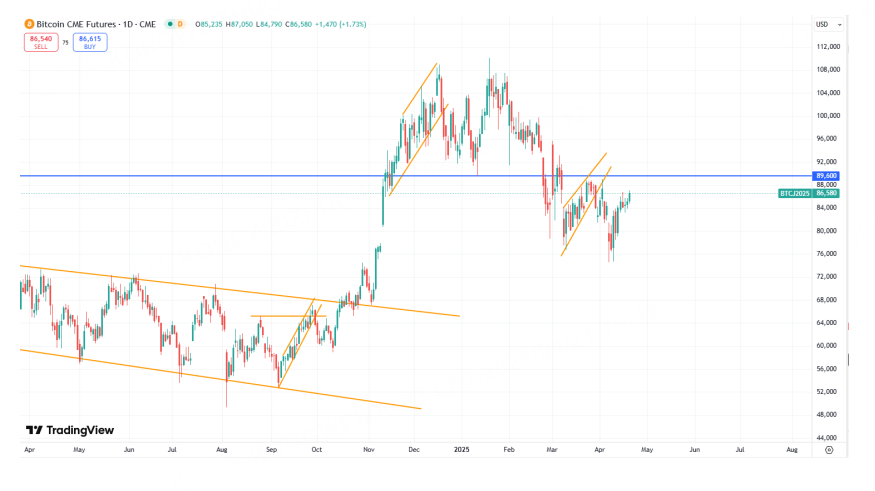From the overall market performance last week, most risk assets that had experienced significant pressure saw a pullback after an initial rapid rebound. Although the market's performance during the week was mediocre, the latest news developments suggest that there are few signs of further deterioration in the short term. After Trump’s tactics failed to yield significant impact, it is expected the market will continue to recover some ground before entering a second bottoming process. During this period, whether in terms of major asset classes or individual stocks, it is advisable to select strong performers, while those showing weak rebounds should be avoided.
Due to the Easter holiday, there were only four trading days in the futures market last week. On the daily chart, the S&P 500 index remained under pressure for four consecutive trading days. However, from a weekly perspective, this was a typical “inside week” pattern, offering little in the way of clear short-term bearish signals.
In last week’s article, it was mentioned that a strong single-day rebound has historically tended to be followed by a fresh low, so it was advised to wait for a second bottom before buying in again.
However, as the number of market-moving events has decreased, this timing is expected to shift later. In other words, before a new low or a secondary bottom is formed, the market is likely to see another round of rebound. The expected magnitude of this rebound is consistent with last week’s forecast, with the S&P 500 likely to face renewed weakness in the 5800–6000 range.
While the U.S. stock indices displayed an impressive one-day surge during this rebound, their overall performance was average; they were neither particularly resilient nor leading the rally. By comparison, crude oil—which had been in a more pronounced downtrend previously—already managed to hit a new short-term high amid its rebound, and Bitcoin, which had stabilized earlier, was even more robust.
It is expected that BTC will maintain a relatively strong stance this week. Based on these two indicators, U.S. indices also have room for further upward rebound.
The only major concern or point of focus is the Japanese yen. We note that after a sustained decline, USD/JPY has now approached its September low from last year. Although recent FX trends have shown greater independence and are not entirely driven by risk sentiment, a too-strong yen remains a negative signal.
The 139.5 level marks a previous low; breaking below it would reinforce USD weakness and signal a continued rally in the yen. In the long run, this would also reflect a more complex and confrontational outlook for China–U.S. relations.
From a weekly and monthly trading strategy perspective, investors who have already bottom-fished can, depending on the asset class, wait for a further 5–10% rebound before considering profit taking or switching direction.
Reference points for this decision can be drawn from previous support/resistance levels. Those holding short positions in risky assets should also consider taking profits or cutting losses and await better re-entry prices (if their position is small, holding or even adding on a reversal isn’t out of the question). Investors currently on the sidelines can either continue to wait for key levels to be reached, or select a hedging strategy by buying strong assets and shorting weak ones among similar asset classes.
$E-mini Nasdaq 100 - main 2506(NQmain)$ $E-mini S&P 500 - main 2506(ESmain)$ $E-mini Dow Jones - main 2506(YMmain)$ $Gold - main 2506(GCmain)$ $WTI Crude Oil - main 2506(CLmain)$




Comments